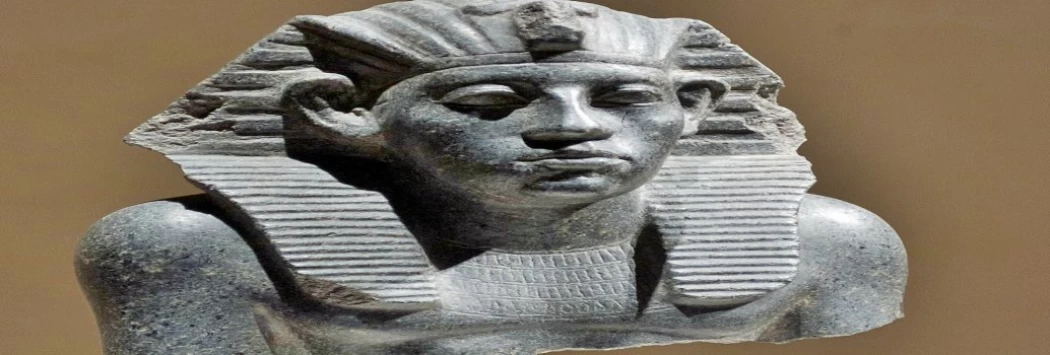
King Amenemhat I | 12th Dynasty Kings
The first king of the Twelfth Dynasty
Pharaoh Amenemhat I is a pharaoh coming from the ancient Egyptian south, the first king of the Twelfth Dynasty, which is considered the pinnacle of the glory of the Middle Kingdom, the second golden period after the age of the pyramids in the Old Kingdom, and this king was most likely the minister Amenemhat who led an expedition to the Hammamet Valley region during the reign of his predecessor Montu Htab IV, who may have been his partner in power.
Influenced by the pyramids of the Old Kingdom, especially the pyramids of the Fifth and Sixth Dynasties, he moved the capital from the ancient capital Thebes (present-day Luxor) to “Itht Tawi” (i.e. holding the two lands) and was buried in his pyramid in the Lasht area in Giza.
The beginning of his reign witnessed great political tension and several conflicts, and there were naval battles carried out by one of his men named Khnumhotep I, in which he won a resounding victory, and this official mentioned that Egypt carried out several military campaigns in the north and south in order to restore the prestige of the state and extend sovereignty over Egypt's areas of influence and possessions.
Pharaoh Amenemhat I strengthened the bonds of his rule, preserved state institutions and returned to the original centralized state, and this pharaoh took a distinctive title among his five titles, “Hum Mesu” meaning “rebirth or renaissance” for the Egyptian land, as he returned to the glories of the Old Kingdom era where the great pyramids and ancient art schools were the most prestigious.
However, the worst thing that happened at the end of this pharaoh's reign was an assassination attempt that led to his death, as evidenced by two famous literary works: The Teachings of Amenemhat and The Story of Snohi, the former of which is an advice given by the father king to his son and heir apparent, Senwosret.
Perhaps the most important part of the story is that he warned him not to trust his followers, told him not to take anyone as a friend, and told his son about his assassination: While he was sleeping at night, weapons were raised against the king by his men, and the king was like a snake in the desert. He tried to resist. This was an attempt on his life by his own bodyguards. There was no weapon in the king's hand, so he could not resist these traitors. There is no brave man at night alone, unarmed, without a weapon, without a helper.
This attack on his life happened because his son Senwosret was not with him, the courtiers did not hear about it, the king never thought about it, and he did not know about the betrayal of these followers. This text confirms that the pharaoh was assassinated by his own guards, while his son and heir, Senwosret (later Senwosret I), was leading a military campaign in Biba. The story of Sennohi expresses the death of King Amenemhat I in a literary allegory that reflects the greatness of Middle Kingdom literature, the golden age of literature in Pharaonic Egypt.














